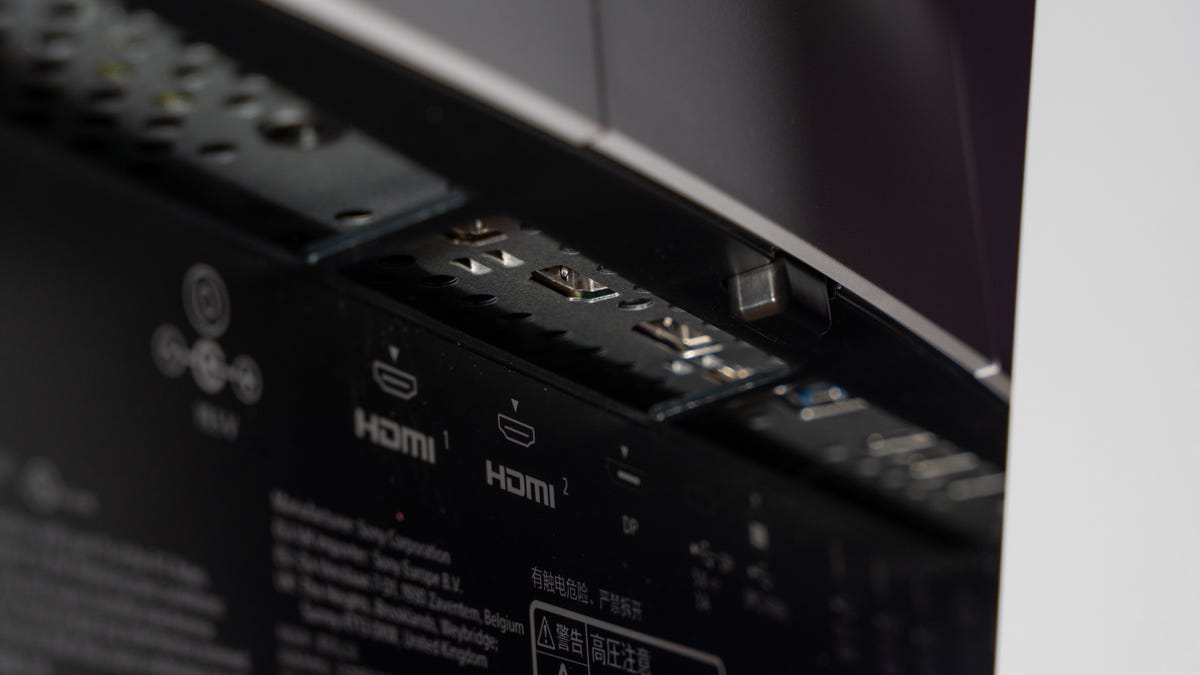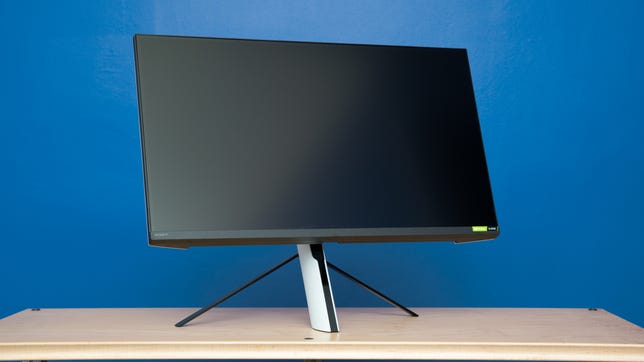A cheaper, faster sibling of Sony’s $900 InZone M9 4K HDR gaming monitor, the 27-inch InZone M3 incorporates a solid 240Hz 1080p screen for its $530 ( 699) price tag. In addition to its unique design, the M3’s most notable novelty is PS5 support for Auto HDR, which maps SDR games to HDR, and Auto Genre picture mode, which switches profiles from game-optimized and low-latency to movie-optimized when you launch them. It also supports HDMI 2.1 which seems like overkill for a 1,920 x 1,080 (FHD), barely HDR screen, but future proofing is always welcome — provided it doesn’t add a lot of cost.
Otherwise, the screen is comparable to models like the BenQ Mobiuz EX270M, Acer Nitro XV272, Acer Predator XB273 and a handful of others. They’re older models but slightly cheaper and lack the HDMI 2.1 and the PS5 automation. The M3 is discounted through early April to just below $500, which brings it more into line with the competition. (The M9 is also discounted over the same period, for $100 off its standard $900 price.)
Like
- HDMI 2.1 with VRR support for PlayStation
- Good sRGB accuracy
Don’t Like
- Looks good but the connection locations and cable management aren’t
- Awkward stand that doesn’t swivel
It has an identical design to the M9, which means it’s equally annoying. Striking, since it uses similar materials to the PS5 but with a more angular aesthetic common to PC gaming displays, but awkward. The metal rear legs of the stand don’t look substantial, though they are.
Sony InZone M3 (SDMF27M30)
| Price | $530 |
|---|---|
| Size (diagonal) | 27 in. (69 cm) |
| Panel and backlight | IPS with LED edgelight |
| Flat or curved | Flat |
| Resolution and pixel density | 1,920 x 1,080 81.6ppi |
| Aspect ratio | 16:9 |
| Maximum gamut | 99% sRGB |
| Brightness (nits, peak/typical) | 400/400 |
| HDR | DisplayHDR 400 |
| Adaptive sync | G-Sync |
| Max vertical refresh rate | 240Hz (DisplayPort and HDMI) |
| Gray/gray response time (milliseconds) | 1ms (overdrive) |
| Connections | 2 x HDMI 2.1, 1 x DisplayPort 1.4, 1 x USB-C (with DP) |
| Audio | 3.5mm out |
| VESA mountable | Yes, 100 x 100 mm |
| Panel warranty | 1 year |
| Release date | January 2023 |
There’s a tiny plastic hook that can hang off one of the thin legs through which you’re supposed to feed your cables. It’s not large enough to accommodate a few thick ones though and really feels flimsy. And while setup is straightforward, it’s unnecessarily inelegant. You need a screwdriver and the included loose screws to attach the legs — at the very least make them captive — and it’s hard to insert the connections because they’re in a recess that requires some contortion to get them into, especially if you have stiff, thick cables.


That slanted leg is striking looking, but not very practical.
Lori Grunin/CNETThat unusual slanted foot also makes it notably difficult to get to the DisplayPort connection and prevents the screen from being able to tilt forward. Most stands let you tilt about 5 degrees toward you, which can come in handy if you’re trying to avert glare. The design also precludes swiveling, which is annoying in a multimonitor configuration and doesn’t allow for putting things on your desk beneath the screen, such as shoving your keyboard there.
It really begs to be mounted on an arm, but at that point it looks pretty much the same as every other monitor out there.


The connectors are in one of those traditional, hard-to-reach recesses in the back of the screen.
Lori Grunin/CNETIn addition to the dual HDMI 2.1 connections, it also supports USB-C for display. It’s got stereo two-watt speakers, which sound about as good as you’d expect; that is, if you expect them to sound tinny and low volume and only good for simple system sounds.
I thought Sony would have fixed the small irritation in the onscreen display, where it defaults to one of the least-needed menu entries — DDC on/off, and a level down — which makes navigating through the menus tedious if you have to do it a lot. Thankfully, everything in the OSD is accessible via Sony’s pretty well designed InZone Hub software.
Like the M9, the M3 has a built-in KVM switch, which means the USB ports depend upon the active input. That’s a perk if you’re connecting to two different systems or a PC and a console, and easy to set up in the software. The input scanning looking for an active connection seems to take a little longer than normal, though, and I got some unexpected resets (where it decides to recheck its connection) — such as between benchmark tests — that I’ve only seen with the Sonys.
Performance
The monitor performs well, with solid behavior at 240Hz and what seems like is the claimed 1ms gray-to-gray pixel refresh, and delivers excellent sRGB color accuracy in its Standard and Game 2 profiles but not in its default Game 1. (How we test monitors.)
Color measurements
| Gamut (% of P3) | White point | Gamma | Brightness (nits) | Accuracy (DE2K average/max) | |
| Default (Game 1) | 82 (111% sRGB) | 7800K | 2.3 | 245/360 (peak) | 3.83/8.3 |
| sRGB (Standard) | n/a (111% sRGB) | 6300K | 2.2 | 265 | 1.92/5.07 |
| Cinema | 82 | 6300K | 2.4 | 337 | n/a |
| HDR | 87 | 6450K | n/a | 473 (10% and full screen) | n/a |
It nominally supports high dynamic range — it’s DisplayHDR 400 certified — but that just means it has a little extra brightness headroom and can do the math needed to display HDR content or map SDR to HDR. It doesn’t make that much of a visual difference, partly because the black isn’t dark enough. The best contrast it could hit was about 2500:1, which is good in general but not great for HDR. On the bright side, I didn’t see any light bleed around the edge as is common with edgelit backlights.
Game mode measurements
| White point | Gamma | Brightness | Contrast (static) | |
| FPS | 7850K | 2.1 | 304 nits | 861 |
| Game 2 | 6300K | 2.2 | 267 nits | 1185 |
I’m not a huge fan of 27-inch 1080p screens for nongaming use because of their low-pixel density, only about 82 pixels per inch, because even my aging eyes object to the visible pixel grid. But it’s okay for gaming because there are rarely any single-pixel-wide lines. If you want something for long workdays as well as gaming, and you don’t need the 240Hz or HDMI 2.1 (you can still use it with a console), do your eyes and wallet a favor and get a 2,560 x 1,440 (1440p) 165Hz model.
It’s a pretty good monitor, but the InZone M3’s screen doesn’t distinguish it from the small pack of 240Hz 1080p options and its stand doesn’t help make a case for it. Overall, it’s a solid choice, especially if you can find it for a more competitive price.
The best laptops in every category
- Best Laptop for 2023
- Best Windows Laptops
- Best Laptop for College
- Best Laptop for High School Students
- Best Budget Laptop Under $500
- Best Dell Laptops
- Best 15-Inch Work and Gaming Laptops
- Best 2-in-1 Laptop
- Best HP Laptops
- Best Gaming Laptop
- Best Cheap Gaming Laptop Under $1,000
- Best Chromebook: 8 Chromebooks Starting at Under $300

